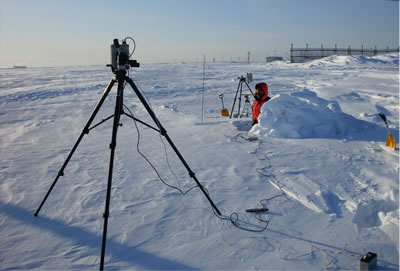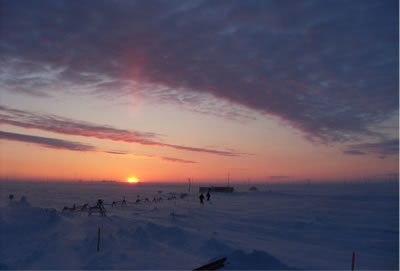Sunlit snowpacks and sea-ice produce a flux of chemicals from the snow or ice to the atmosphere. With up to 50% of land in the Northern hemisphere (North of 20N) being covered with seasonal snow this presents a large flux of chemicals to the atmosphere. This chemical flux has two consequences (1) it makes the atmosphere more oxidising and (2) it changes the concentration of chemicals in snow and ice cores. Chemical records in ice cores drilled in Polar Regions are used to understand previous climate change, and thus predict future climate change. The photochemical processes that occur in sunlit sea ice are similar to those that occur in snowpack. Sunlight also drives the primary production of the plants and algae in the sea ice, and provides a nutrient flux to the ocean on ice break-up.The aim of this project is to test whether an exciting new photochemical mechanism proposed from laboratory experiments and published in Nature ((2006) 440(9),195) and Faraday discussions ((2005), 130,195) is possible in snow and ice: Can nitrous acid and hydrogen peroxide be produced in and on snow and sea ice by a sunlight driven chemical reaction involving natural organic matter in snow and ice? The chemical mechanism is catalytic and does not consume the organic matter.A US-French-Italian-British Arctic field trip (Barrow) will quantify the fluxes of chemicals (NO, NO2, HONO and HNO3) from the snowpack using measurement of chemical fluxes, momentum fluxes, chemical and physical properties of the snow, and the measurement of the sunlight on and in the snowpack. The PI will provide the measurements of the sunlight irradiance in the snow and above the snow and modelling the flux of chemicals from the snow to compare with the field measurements and thus test the chemical mechanism. We measure the albedo and light transmission of many snows and sea ice with a small, portable, battery powered item of equipment that can be transported in backpacks. and snow machines. A model is used to compute the amount of chemistry driven by this sunlight in and above the snow.
 |
| |
 |
Staff:
Research students:
Funding: NERC
Links:MDK personal page - http://eswww.rhul.ac.uk/~king/work/Home.html